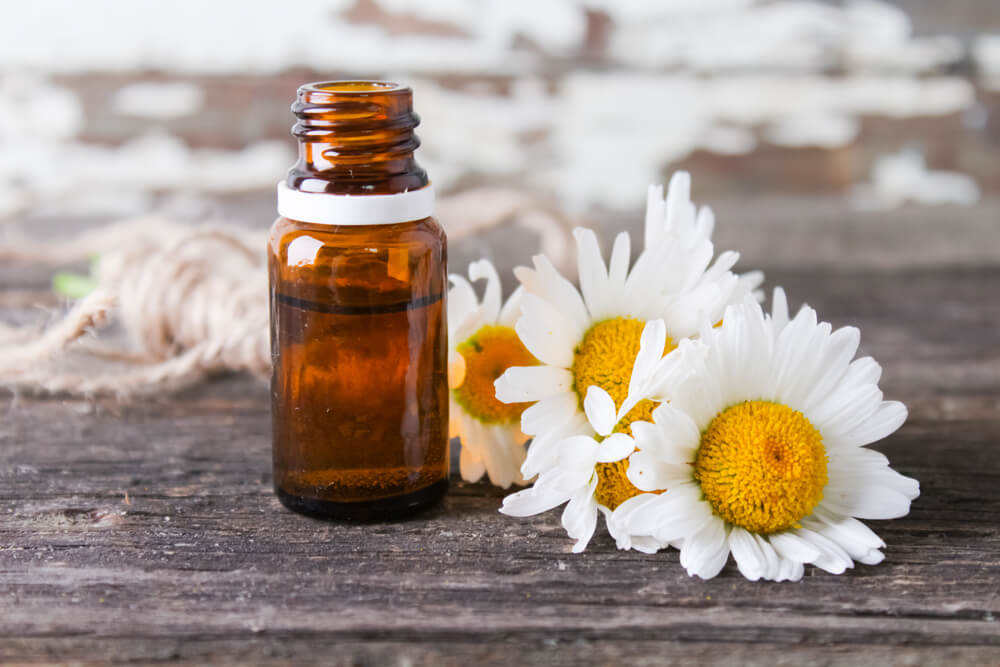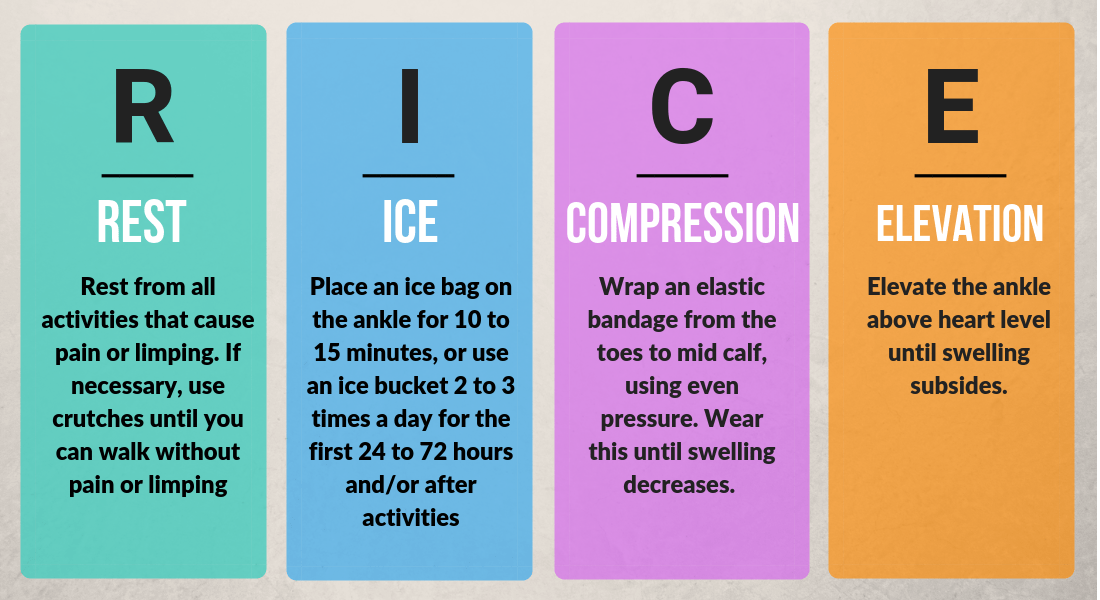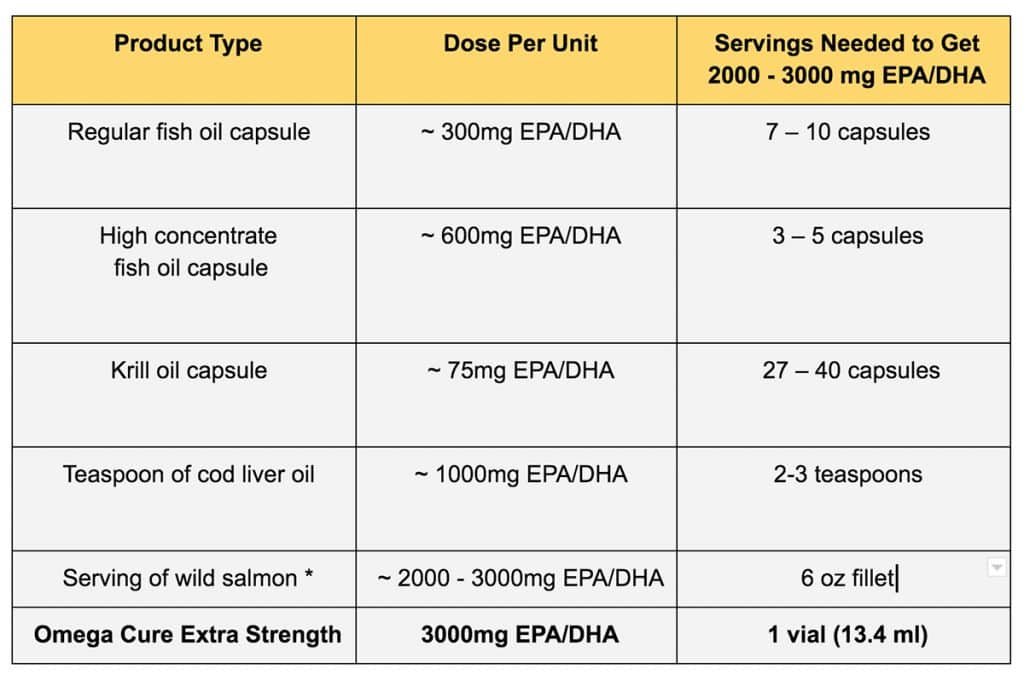How to Relieve Shoulder Pain Naturally
“Sit with the pain until it passes, and you will be calmer for the next one.” – Naval Ravikant
This wise saying holds true for any type of ‘emotional’ pain. One that often leads to growth, self-development, and a feeling of accomplishment. While combating emotional pain is often revered, even sought-after; the case of physical pain is less endearing, especially when it comes to severe shoulder pain.
What’s even worse is how shoulder issues of any kind – be it mild or excruciating, gradual or abrupt, are often shrugged as a ‘temporary’ inconvenience. Let’s make one thing very clear. It is neither short-term nor to be taken lightly.
Let’s start with understanding the anatomy, the shoulder is a joint that is made up of three bones: the upper arm bone, collarbone, and the shoulder blade. Shoulder pain typically characterizes physical discomfort around the shoulder, the joint, muscles, or tendons and ligaments that support the joint.
In addition to this, there are different types of shoulder pain to watch out for. These include: rotator cuff tears, shoulder separation, fracture, cartilage tear, impingement, dislocated shoulder, SLAP tear, frozen shoulder, referred pain, heart attack, and shoulder arthritis being the common ones.
Table of Contents
How to Relieve Shoulder Pain Naturally?
So if you’re tired of browsing the Internet and can’t find any helpful tips on how to treat shoulder pain, don’t worry. This section details simple and easy-to-implement home remedies and natural alternatives that you can try to get rid of the mind-numbing pain. So let’s get started.
- Essential Oils
- Foods
- Alternative Therapy
- Herbal Remedies
- Supplements
| “One out of every ten people in the United States suffers from chronic shoulder pain.”(1) – WHO |
CURE 1: Essential Oils
We’ve all Googled “How to stop shoulder pain” at one point or another. After all, the daily grind and crazy work schedules can take a toll on the body. It goes without saying that you cannot reach out for a strong pill every time you experience tense and sore shoulders.
Which is why it’s time to consider essential oils which are known for its therapeutic effects. To make it simple, essential oils are the natural equivalent of over-the-counter pain-killers. They’re subtle in approach and effectively treat the root cause of the problem.Plus, data shows that they contain volatiles that can adjust brain electrical activity to alter your perception of pain! Now that you’re convinced, here are the top three essential oils you can stock up:
1. Devil’s Claw oil
Native to South Africa, this plant comes with anti-inflammatory properties.
Why does this work?
It works well to treat any kind of muscle pain and inflammation.
How to use and how much to use?
It is available in three forms: as an essential oil, as an ointment, and in the dry extract form. Remember that essential oils if not used correctly, can add to the swelling and cause rash or skin irritation.
It is important to always dilute essential oils with a carrier oil (coconut, olive, argan oil, etc.) instead of using it directly. In terms of the standard measurement, you can add six teaspoons of carrier oil for every fifteen drops of essential oil. And use a small amount to massage the pain-affected area.
2. Chamomile oil

There are two types of Chamomile oil that you can choose from: the Roman oil and the Blue oil.
Why does this work?
The Roman oil variant comes power-packed with sedative, relaxing, and anti-stress properties and works well for neck and shoulder pain. While the blue oil variant comes with anti-inflammatory properties and comes in handy in cases of headache, muscle pain, and low back pain.
How to use and how much to use?
It is available in the oil form and can be mixed with peppermint oil to create a custom blend for greater effectiveness. Simply mix two to three drops of chamomile oil with any carrier oil of your choice and massage with it on the affected area. After the massage, apply a heating pad for ten to fifteen minutes so that the oil gets soaked into the shoulder joints and starts working its charm.
3. Lavender oil
Lavender oil is extensively used in aromatherapy and is known for its relaxing and pain-relieving effects. Studies suggest it is extremely effective in producing a calming effect during a headache.
Why does this work?
It relieves pain and inflammation as it possesses spasmolytic and sedative properties. If you suffer from neck and shoulder pain as well as migraine, this oil is for you.
How to use and how much to use?
You can mix this oil with jojoba, almond oil, or with a neutral cream. The suggested ratio is five to ten drops of lavender oil in 50 ml of cream or carrier oil.
CURE 2: Foods
We know you’re already reading this section with layers of suspicion: Can eating specific types of food actually help in reducing pain and inflammation associated with the shoulders? The answer is yes. These top three scientifically-backed foods will put your concerns at ease:
1. Ginger

Ginger is the most common ingredient used extensively in our kitchens as it imparts a great flavour to tea, soups, food, you name it. But its healing properties far out-weigh its taste benefits. Studies(2) suggest that ginger may be as powerful as OTC pain-relievers at easing pain and inflammation!
Why does it work?
As per data, ginger can block the formation of compounds, prostaglandins and leukotrienes that cause inflammation. That’s not all. It possesses antioxidant properties that reduce inflammation and acidity in the fluid within the joints.
How to use and how much to use?
You can consume ginger in its fresh powdered or dried form for best results. You can take one to four grams of powdered ginger daily, divided into two to four doses. However, please consult your doctor for understanding the recommended amount each day.
2. Broccoli
Everyone knows how healthy broccoli is but very few know about its anti-inflammatory effects as per research(3).
Why does it work?
It contains compounds that work against the production of inflammatory agents.
How to use and how much to use?
You can saute the broccoli or make a soup out of it. There are hundreds of recipes online from which you can pick and choose. However, make sure to consult your doctor for understanding the right amount and duration for which you should consume this superfood.
3. Pineapple
If you’re experiencing shoulder ache due to muscle damage, you can try eating fresh pineapple.
Why does it work?
Pineapple contains proteolytic enzymes such as bromelain which can treat the root cause of your shoulder ache, reduce inflammation, and decrease swelling. It also helps to speed up recovery in cases of injury and surgery.
How to use and how much to use?
You can directly eat fresh pineapple or make a salad out of it. Please consult your doctor for understanding the right amount and duration for which you should consume this superfood.
| “An appropriate diet for shoulder pain relief (for those suffering from osteoarthritis) should include onions, asparagus, brown rice, and avocados. You should avoid foods that contain solanine, including eggplant, peppers and white potatoes as it may cause pain or discomfort in some people who have arthritis.” – Phyllis A. Balch, author of “Prescription for Nutritional Healing.” |
Recipe for a DIY Shoulder Pain-Relieving Decoction
Grind methi, sonth (dried ginger and tamarind paste), and ajwain (carom seeds) to a powder. Take a spoonful of this mixture and mix it with lukewarm water. Drink this after meals. Conversely, you can also drink ashwagandha with warm milk for immediate relief.
CURE 3: Alternative Therapy
Home remedies, in our humble opinion, are highly-underrated natural alternatives to dealing with shoulder pain. They’re easy to implement, practically free-of-cost, and best of all, come with no side-effects.
So why not go the safer and the right route to tackle with shoulder pain the way God intended it. Simply, tap into the ‘drug cabinet’ in your brain and use your willpower and dedication to get immediate relief. Try these top four home remedies that too in the comfort of your home:
1. Physical Therapy

Why does it work?
Physical therapy helps you to understand the problem at hand and address the root cause as well. It helps to reduce pain, increase shoulder mobility, and improves the functional use of the affected area. This is extremely beneficial to ensure that the pain is treated from the source and does not recur again. So first and foremost, visit your physical therapist to evaluate your shoulder pain. Based on the assessment, various therapeutic initiatives will be suggested to you.
How often to undergo treatment?
Your Physiotherapist will give you a complete low-down of the schedule and the treatment options available. Please seek expert advice for this.
2. Acupuncture
Why does it work?
Acupuncture is an effective non-drug therapy that helps to release chemical compounds in the body that relieve pain. It also helps to override pain signals in the nerves and allows a free-flow of energy (Qi) through the body.
In fact, researchers from the Yuxi Hospital of TCM (Traditional Chinese Medicine) claim that acupuncture is 90% effective in treating shoulder pain, inflammation, and range of motion impingement. Typically, the acupuncture process involves manual rotating and pulling techniques. It is during the needle rotation that the person is encouraged to maximize shoulder movement. This can be done by stretching, raising your arms, reaching behind the back, etc.
How often to undergo this treatment?
Please seek expert advice from an Acupuncturist to understand the kind of treatment you require basis the type of shoulder pain you’re experiencing.
3. Kinesiology Taping
Why does it work?
A common type of physical therapy, Kinesiology Taping helps to lower pain, provide more support for your joints, gain strength in the shoulders, and promote regular muscle contractions. Basically, it facilitates rotator cuff and shoulder deltoid muscles and ensures a speedy recovery.
How often should you do it?
Please seek expert advice from a Physiotherapist to understand the kind of treatment you require basis the type of shoulder pain you’re experiencing.
4. Ice or Heat
Why does it work?
“RICE” stands for Rest, Ice, Compression, Elevation and this method works overtime to reduce inflammation and helps you heal faster.

How to do it and how often should you do it?
First, make sure you provide enough rest to the affected area. Then, you can apply ice on the shoulder for fifteen to twenty minutes. Follow up with a heat compression wrap for another fifteen to twenty minutes to avoid further swelling. Finally, rest in an elevated position to reap the maximum benefits of this method. You can repeat this process two to three times a day.
5. Exercises
Repeat after me: When it comes to shoulder pain, movement is medicine. Unless you’ve got a dislocated or fractured shoulder of course. A key concern that’s emerging is the curious case of the ‘text neck.’ Believe it or not, but it is actually a legitimate health concern today.
Simply ‘text neck’ occurs due to bad posture, which typically results from constant typing on the phone or computer all day. Luckily, since this kind of pain is lifestyle-related, there are steps you can take to combat it effectively and easily. Let’s look at small efforts that can bring huge gains with respect to shoulder pain.
If you just randomly searched for “Exercises for Shoulder Pain” on Youtube or Google right now, you’d encounter a least a million suggestions on the same. To make things easier for you, we are listing three simple exercises you can do to fight that nagging shoulder pain that makes routine tasks difficult to accomplish.
-
Chin press:
If you wish to strengthen and align your head and upper spine, try the chin press exercise. Relax your shoulders and sit up straight. Press your head backwards (about an inch) and press your fingertips into the chin. Hold till the count of three and repeat ten times.
-
Neck stretch (Assisted):

Start with the left side. Drop your left ear towards the left shoulder and place your left hand over the right side of the head. Then, gently pull your shoulder and neck away from each other and enjoy a deep stretch. Remember to take two deep breaths and repeat on the other side. If you want an even deeper stretch, try turning your chin down diagonally and take three deep breaths. Repeat this as often as you can and say goodbye to those tense muscles!
-
Square shoulder shrugs:
First off, sit upright. Then, bring your shoulders up, down, forward, and back. Imagine as if you’re trying to touch the four corners of a square box and try to elongate the stretch as much as you can. Repeat this five times.
6. Stretches
Perhaps one of the best tips you’ll read today, think of muscles as cotton fabrics. Yes, you read that right. In an article by Harvard University(4), they claim that “Muscles tend to shrink up slightly, but if you pull on the fibres, you can stretch out the fabric again.”
You know what that means right? If you haven’t been moving those muscles, it’s time to get them stretching. To put it in another way, stretches are for shoulders what lungs are for breathing: absolutely necessary for smooth functioning.
So, here are three stretching exercises that can melt those ever-tight knots, help sure better movement and flexibility, and provide some much-needed relief:
-
Shoulder stretch with rotation:
Stand straight with your feet hips apart. Place your right hand (back faced) at your back. Remember that your fingers should be pointing up. Take your right hand as far as it will go in the upwards direction. Hold 10 to 30 seconds and repeat it three to four times. Follow the same process with the left hand.
-
Seated chest stretch:
Sit straight facing sideways in a chair. Next, relax your shoulders and bring it back. Then, clasp your hands and intertwine your fingers behind you. Then comes the stretch. All you need to do is lift your hands toward the ceiling till you feel the stretch in the front shoulders and across your chest. Hold. Then return to the beginner position. Repeat this for two to four times and try holding it for ten to thirty seconds.
-
Seated shoulder stretch:
Seat yourself on a chair with your back straight. Place your right hand on your left shoulder, cupping your right elbow with your left hand. Then, extend your right arm across your chest (towards the left side). You will feel an amazing stretch in your right shoulder. Hold for ten to thirty seconds. You can repeat this stretch two to four times. Now try on the opposite side.
“The muscles need to be long and flexible to stay healthy. You’re more vulnerable to injury when your shoulder muscles are tight and restricted.” – Clare Safran-Norton, Clinical Supervisor of Rehabilitation Services, Brigham and Women’s Hospital.
7. Yoga
Everyone knows that yoga if done correctly, can have a therapeutic and calming effect on the mind, body, and soul. So if you’re suffering from a shoulder strain, try these simple yoga poses to relieve stress and tension in the neck and the shoulders:
-
Bhujangasana:

Lie on your stomach with your palms placed on either side, facing down. On an inhale, lift your chest (using your upper back muscles) with your head facing forwards. Hold the position for ten seconds. On an exhale, lower your chest and come back down. Do at least four rounds in total to start with.
-
Uttanasana:
Stand with your feet hip-apart and place your hands on your buttocks. Exhale, bend forward and slide your hands down the backs of your legs. You’ll experience a nice, deep stretch. Then, bring your chest toward your thighs and tuck your chin. Next, inhale, lift your chest away from the stomach and lift your chin gently. Bring your torso halfway up and extend your hands forward while hugging your shoulder blades together. On an exhale, bend forward, slide your hands back toward your heels and relax your shoulder blades while tucking your chin. Repeat four times.
-
Balasana:
Also called the Child’s Pose, this asana helps to strengthen the back, neck, and shoulders. Kneel on your mat with your toes touching each other and extend your knees hip-width apart. Then, bend forward and lay your torso between your thighs. Settle down on your inner thighs. Inhale deeply. Next, extend both arms extended forward so that they’re in line with the knee. Bring your forehead towards the floor. You’ll notice a deep stretch in your upper arms and your shoulder. Relax for at least 30 seconds. Repeat three to four times.
Sleeping Positions for Shoulder Pain
Sleeping in the correct posture can save you from a world of pain the next morning – especially when it comes to joint and muscle pain. Also, try getting at least 8 hours of sleep every night so that you wake up refreshed and rejuvenated. Couple this suggestion with these highly-recommended sleeping positions, and you’ve got yourself a winning-and-pain-free formula:
- With a pillow under your legs, sleep on your back. This offers support to your lower back curve and reduces the chances of waking up with a strained back.
- Sleep on your side with leg support. Make sure to keep your hips straight and your knees slightly bent. It is very effective for people suffering from back and neck pain.
- Sleep on your back with shoulder support. This sleeping position comes in handy for people suffering from rotator cuff pain. Nestle a small pillow between your shoulder blades and sleep on your back.
- Sleep with a flat pillow. This helps as it lowers your head’s elevation levels and reduces stress in the neck and shoulders. Orthopaedic pillows also work like a charm. Handy tip: Opt for pillows with a deeper depression to support your head and neck better.
Did You Know!
| “Pain Alert: If you are experiencing continuous shoulder pain, it can be as a result of an underlying injury or disease such as spinal disorder, diabetes, heart or liver disease. This holds true, especially if you feel tightness around your shoulders and shooting pain that travels down your arms. ” |
CURE 4: Herbal Remedies
Did you know that there are over 100 plants that are known for their pain-relieving properties? Call them herbal painkillers or natural alternatives; these plants are safe to use and just as effective as their antibiotic counterparts. Possibly because of their medicinally active roots and anti-inflammatory properties. Let’s glance through the best herbal plants that treat shoulder pain and are readily available at your disposal:
1. Boswellia

Also known as Indian Frankincense, Boswellia is commonly used for treating pain caused by arthritis. It is native to India and is extracted from the gum of the Boswellia tree.
Why does it work?
Chemicals in this extract called Boswellia acids have anti-inflammatory and analgesic effects and are known to block substances such as leukotrienes that attack healthy joints. Plus, clinical studies suggest that Boswellia extracts improve pain symptoms more than a placebo in people with osteoarthritis.
How to use and how much to use?
Boswellia is traditionally available in the capsule form as well as topical cream form. Studies suggest Boswellia for joint pain in doses ranging from 100 mg once per day to 333 mg, three times a day. Or, you can take 150- to 400-mg capsules, three times daily for two to three months. That being said, please consult your doctor first before consuming this herbal plant.
2. Eucalyptus
Eucalyptus leaves help treat all kinds of inflammatory pain.
Why does it work?
It’s leaves contain tannins, which helps in reducing swelling and related pain.
How to use and how much to use?
It is generally used as a topical oil extract. If you’re applying it topically, make sure to do a patch test on your skin for any unknown rashes or allergies. As a handy tip, make sure to follow up the process with a heating pad (for about ten to fifteen minutes) to enjoy its maximum benefits.
3. Aloe Vera
If you’ve never heard of aloe vera, you’re probably living under a rock. This herbal plant acts as a natural healer and comes with no side-effects. So complete your anti-pain arsenal and stock up on aloe vera right away!
Why does it work?
It comes with anti-inflammatory and analgesic properties to treat muscle and joint pain. Plus, it also helps in repairing and healing joint tissues.
How to use and how much to use?
It is available in a variety of forms: whole leaf plant, gel, capsule, cream, or juice. You can apply it topically to soothe aching joints and get instant relief. Please consult your doctor to understand the right dose for you, based on your preferred aloe vera form.
CURE 5: Supplements
Let’s face it. When it comes to shoulder pain, ibuprofen and aspirin are our best friends. But if you want a more long-term relief instead of a temporary fix, focus on your supplement intake. After all, when it comes to joint and shoulder pain, the ‘protect and prevent’ philosophy should take centre stage. Here are four supplements that cater to present should injuries, while preventing your joints and ligaments from future pain and injury.
1. Fish Oil

A lot has been spoken about how fish oil comes power-packed with Omega-3 Fatty Acids. And data(5) suggests that it is this magic ingredient that serves as a God-send for treating inflammatory issues – a common symptom of shoulder pain.
Why does it work?
Fish oil supplement has emerged as an effective natural alternative for joint pain relief and related swelling. Why? Because studies suggest that consuming one to three grams of fish oil can reduce joint pain symptoms such as morning stiffness, tenderness, swelling, and discomfort.
Omega-3 Fatty Acids such as Eicosapentaenoic Acid (EPA) and Docosahexaenoic Acid (DHA) restrict the growth of negative proteins that lead to arthritis, offer gentle lubrication, and aid in blood flow throughout the body.
How to use?
Fish oil can typically be consumed as a capsule or in the liquid oil form. Remember that integrating cold-water fish, such as salmon and sardines, directly into your diet also helps.
How much to use?

Source: omega3innovations
Taking a dose of 2,000 mg to 3000 mg EPA/DHA daily for a period of 12 weeks can effectively cater to those aching joints. It is crucial to consult your doctor to understand the ‘right’ dosage for you basis your medical history, age, diet, lifestyle, among other things. Remember that taking the accurate dosage can make all the difference when it comes to fish oil supplements.
2. Glucosamine and Chondroitin
Glucosamine prevents bones from rubbing against each other and causing inflammation and pain, whereas Chondroitin comes with anti-inflammatory and pain-relieving properties and prevents cartilage breakdown from osteoarthritis, making both of them extremely beneficial for all kinds of shoulder pain.
Why does it work?
As per the Sports Injury Clinic, both these supplements help in musculoskeletal injuries and act as the building blocks of cartilage, thereby assisting the body in repairing and manufacturing cartilage. Additionally, chondroitin aids in increased blood flow in the joints of the body and reduce joint pain and stiffness in people suffering from osteoarthritis(6).
How to use?
Both these supplements are available in the pill form.
How much to use?
The recommended dose for Glucosamine Sulfate is 1,500 milligrams (mg). It can be taken once every day. To be on the safe side, you can take three doses of 500 mg each. With respect to Chondroitin, the recommended dose is between 400-800 mg. You can take it two to three times daily. However, it is strongly advised that you consult your doctor before self-prescribing these supplements.
3. Magnesium, Potassium, and Calcium
The trifecta of supplements when it comes to dealing with muscle stiffness, cramps, and pain, all three minerals are essential for our muscular well-being.
Why does it work?
Magnesium is known to lower nerve pain while alleviating anxiety, shoulder rigidness, and muscular spasms. Potassium contributes towards a good night’s sleep while easing any cramp-related pain. Calcium aids in muscle growth and controls spasms and shoulder pain.
How to use?
You can take magnesium, potassium, and calcium orally in the capsule form for best results. Alternatively, you can have avocados which are rich in magnesium or enjoy Epsom salt baths. Plus, you can eat bananas, which are a great source for potassium, and consume dairy products to get your daily dose of calcium.
How much to use?
Please consult your doctor for the recommended dosage as it depends on your medical history, age, diet, lifestyle, requirement, among other things.
4. Vitamins C and E

Vitamins C and E are aptly known as toxic as well as pain removers (7)and come with antioxidant properties. They detoxify the body naturally and effectively.
Why does it work?
They cleanse the body of toxins that cause inflammation and swelling. Vitamin E, in particular, acts as a potent anti-inflammatory agent and a pain-reliever. So, if you’re someone who wants to reduce your dependency on antibiotic medicines, choosing the right supplement is the way to go.
How to use?
You can take vitamin E and C orally in the capsule form for best results. Conversely, you can eat vitamin E and C rich foods by including it in your daily diet. Vitamin E abundant foods include sunflower seeds, almonds, peanuts, spinach, butternut squash, etc. whereas vitamin C-rich foods include citrus fruits, such as orange, kiwi, lemon, guava, grapefruit, and vegetables, such as broccoli, cauliflower, Brussel sprouts and capsicum to name a few.
How much to use?
Please consult your doctor for the recommended dosage as it depends on your medical history, age, diet, lifestyle, requirement, among other things.
Shoulder Pain: Debunking the Common Myths
- Shoulder pain only occurs in Sports Athletes and people who engage in manual, labour-intensive work.
- Pain in the shoulders always means internal damage. That’s not true. Sometimes, you can be sore from exercising and hence, safe both internally and externally.
- Shoulder pain is all about tissue damage. Sometimes, it can also be about increased sensitivity.
- Shoulder pain is uni-dimensional. On the contrary, it is multi-dimensional, and shoulder sensitivity can be caused by a variety of factors: tissue injury, medical history of pain, lifestyle habits, emotional triggers, socio-economic factors, among others.
- Rotator cuff tear can only be fixed with surgery.
- Doing an MRI is the only way to understand what’s going on with your shoulder pain.
FAQ’s
1. What to do for shoulder pain?
There are a number of things you can do to treat shoulder pain, depending on the pain intensity and type. Some suggestions include (but are not limited to): Anti-inflammatory medication, cold compress, heat therapy, compression, muscle relaxants, specific exercises, rest, and activity regulation.
2. What are the common reasons for shoulder pain?
Shoulder pain may occur due to a number of factors. One, it can be a rotator cuff injury which typically happens due to shoulder overuse. Two, it could be because of an accident or sports injury, which can lead to damaged shoulder joints and ligament. Three, it can flare-up if old injuries were not catered to properly.
3. What are the primary symptoms of shoulder pain?
The first thing to notice in the case of mild or severe shoulder pain is a lack of mobility. Two, the person generally experiences inflammation and swelling in the affected area. Other related symptoms to take note of include numbness, muscle weakness, and a lack of control in arm movement.
4. How can I prevent shoulder pain?
Getting your standing, sitting, and walking posture right, without slouching, is essential. Then, always make sure you be extra careful when carrying weights and make sure to take breaks if your work requires you to sit in front of a computer and type all day. Finally, avoid stacking up on pillows and be mindful of your sleep position to avoid any neck or shoulder pain.
5. How can I treat shoulder pain temporarily?
There are two ways to go about it. One, you can use an ice pack and place it on the inflamed area for 30 minutes. Or you can try heat compression and apply on the area till the inflammation reduces.
Dos & Don’ts for Treating Frozen Shoulder
| Dos | Don’ts |
| Follow your doctor or osteopath’s advise as religiously as possible. You can massage the area with lukewarm oil from time to time. | Don’t freeze your arm’s movement – no matter how much it pains. |
| Make sure to engage in mobility exercises for both the left and the right sides. Data suggests that exercising the unaffected arm can help treat the affected one as well. | Don’t derail from your diet and skip meals Plus, make sure to include healthy and anti-inflammatory foods to the extent possible. Frozen food, carbonated drinks, packaged food, chips, popcorn, refined flour products, ice cream, tea, coffee, and alcohol are a complete no-no. |
| Go for your physiotherapy sessions as instructed. | Don’t engage in tasks that require extensive weight-lifting or hand pulling as it can cause stress on your arms. For e.g., Carrying a heavy bag, walking your dog, etc. |
| Take special care of your sleeping positions. | Don’t skip sessions with your doctor and physiotherapist. |
| Eat fresh and lukewarm food, and keep a ‘shoulder journal’ to document your health progress. | Don’t sleep very late at night and avoid exposure to cold environments for an extended time period. |
Did You Know!
Here’s an interesting exercise. Different kinds of shoulder pain or movements can signify your current mood. Take a look at these examples and identify the ones that seem applicable to you:
|
The Truth About Shoulder Pain: In Black & White
Ever wondered how the word “shoulder” can be a verb, convey an emotion, or simply mean an integral body part? It’s probably why the phrase “Shoulder responsibility” came into being. And come to think of it, we rarely think about our burden-carrying, tension-holding, overstressed-and-overused shoulders. A big mistake.
The moral of the story? Shoulder pain – whether it’s the shooting type or the general nagging type, should not be ignored. And even though some types of shoulder pain do become more common as we age, there are natural and homely initiatives you can take to tackle the pain. Remember that when it comes to shoulder pain, internal weakness, different body structures, body posture, and body strength play a much bigger role than commonplace belief.
Try these deceivingly effective home remedies and see the difference for yourself. There’s no need to carry the world’s weight on your shoulders, both literally and figuratively in this case. Deal with life head-on and don’t let shoulder pain slow you down!
In the off chance that none of the above mentioned natural treatments is working in your favor, please consult a doctor for understanding the next steps you should take.




